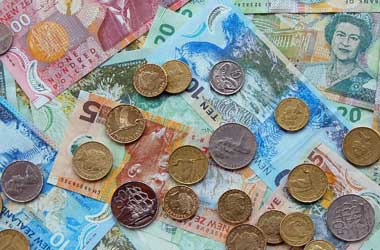 The euro-dollar exchange rate fell by 0.0009 percent, or 0.08 percent, to 1.1271 on Monday, November 22, after falling to 1.1280 in the previous trading session. The dollar index rose beyond 96 points on Monday, with the US currency trading near to a 16-month high versus the euro, lifted by its safe-haven reputation in the face of a surge in COVID-19 cases in western countries and the reimposition of lockdowns in Europe, among other factors.
The euro-dollar exchange rate fell by 0.0009 percent, or 0.08 percent, to 1.1271 on Monday, November 22, after falling to 1.1280 in the previous trading session. The dollar index rose beyond 96 points on Monday, with the US currency trading near to a 16-month high versus the euro, lifted by its safe-haven reputation in the face of a surge in COVID-19 cases in western countries and the reimposition of lockdowns in Europe, among other factors.
The dollar also gained ground versus the Australian and Canadian dollars, since commodity-based currencies were under stress as a result of the decline in oil price. The Federal Reserve officials Richard Clarida and Christopher Waller stated on Friday that a quicker rate of stimulus withdrawal may be warranted in light of the economy’s rapid recovery and high inflation, offering more support to the greenback in the process. The Federal Reserve funds rate is expected to be raised in June 2022, followed by two further rises in September and December, according to the money markets.
After reaching EUR 37.8 billion in September of the previous year, the Euro Area’s current account surplus shrank to EUR 26.9 billion in September of 2021. Compared to the previous year, the goods surplus has practically halved to EUR 18.1 billion, while the secondary income deficit has increased to € 13.7 billion from € 11.2 billion. The services surplus, on the other hand, climbed to EUR 16.4 billion from EUR 11.4 billion, while the primary income surplus increased to EUR 6.2 billion from EUR 2.4 billion, respectively.
After rising to 3.4 percent in September, the annual rate of inflation in the Euro Area jumped to 4.1 percent in October of 2021, the highest number since July of 2008 and in accordance with earlier predictions. The EU is continuing to fight rising energy prices while also dealing with ongoing supply constraints. Prices of energy (23.7 percent), services (2.1 percent), non-energy industrial products (two percent), and food, alcohol & tobacco (four percent) saw the most significant rises (1.9 percent ).
Malta (1.4 percent), Portugal (1.8 percent), Finland (2.8 percent), and Greece (both 2.8 percent) had the lowest annual inflation rates, while Lithuania (8.2 percent) and Estonia had the highest (6.8 percent). Germany had an increase in inflation to 4.6 percent, while France and Italy experienced an increase in inflation to 3.2 percent.
According to preliminary calculations, the Euro Area’s GDP grew by 2.2 percent quarter on quarter in the three months to September 2021, after a 2.1 percent increase in the previous quarter and meeting early expectations.
The economy continued to recover from the effects of the coronavirus, with the most significant expansions reported in Austria (3.3 percent), France (3 percent), and Portugal (2.9 percent). Germany’s GDP increased by 1.8 percent, while Italy’s GDP increased by 2.6 percent.
Based on the latest forecasts from the European Commission, the Euro Area’s GDP growth is projected by 5% this year, regardless of the fact that high energy prices, rising inflation, persistent supply constraints, and an inevitable rise in coronavirus cases persist to threaten the recovery.




